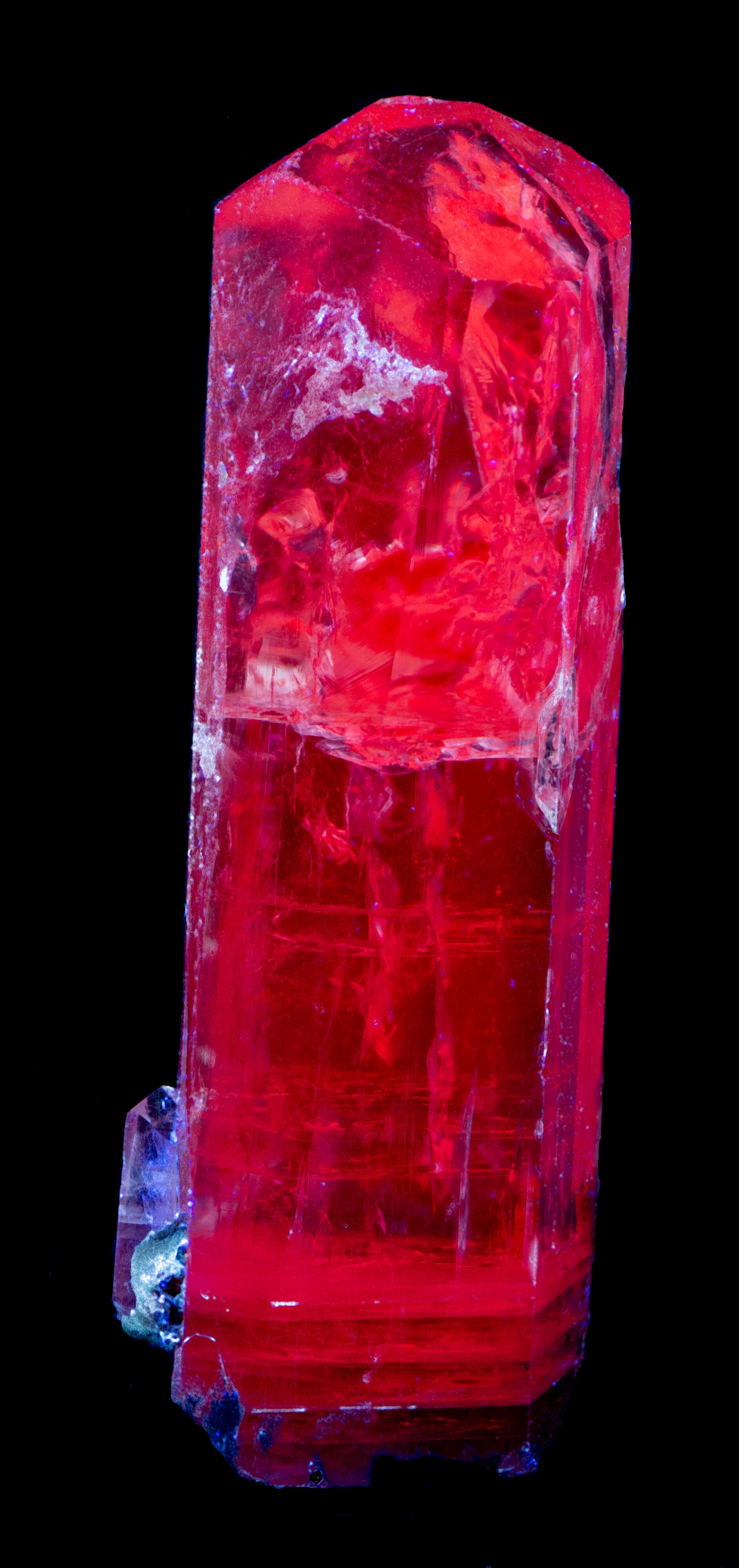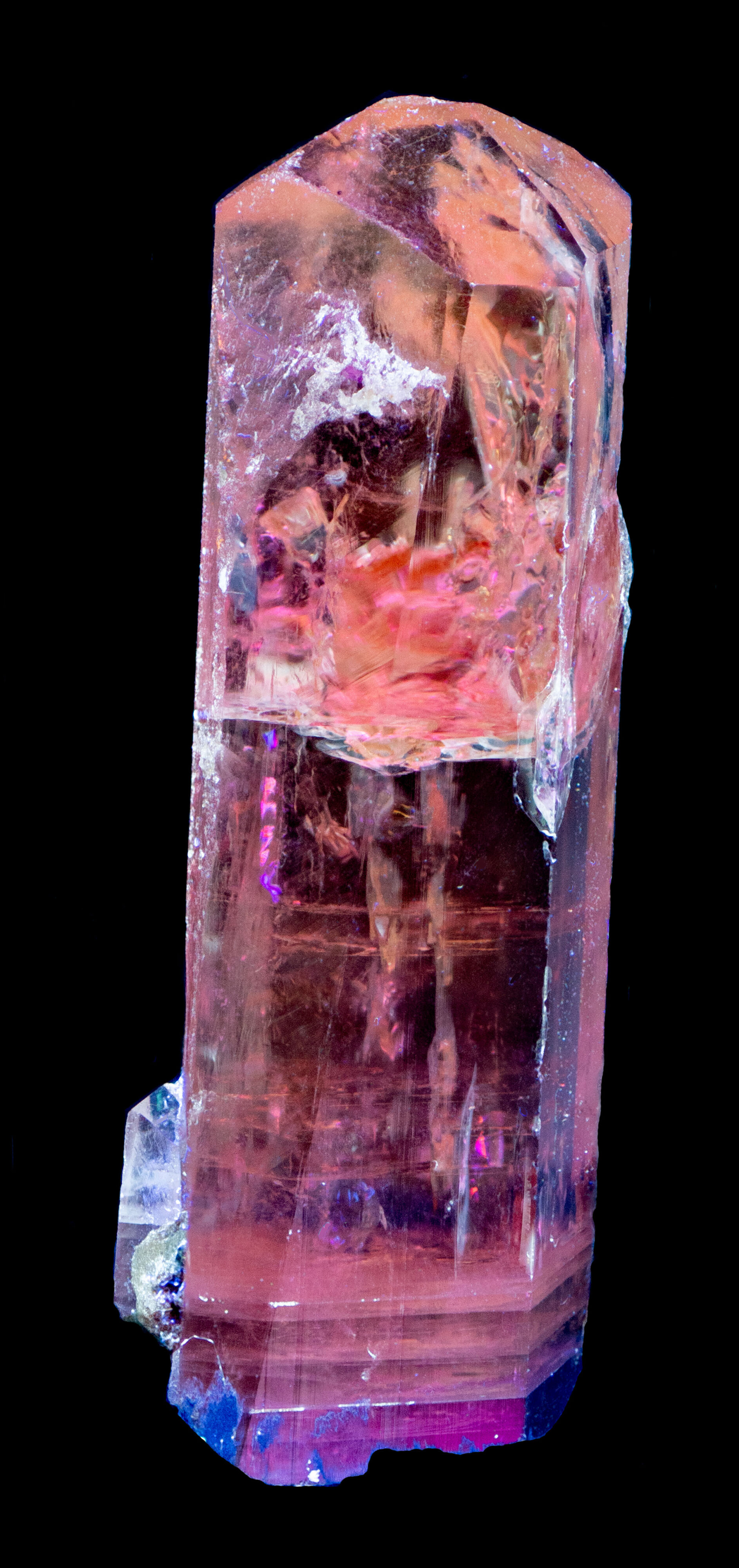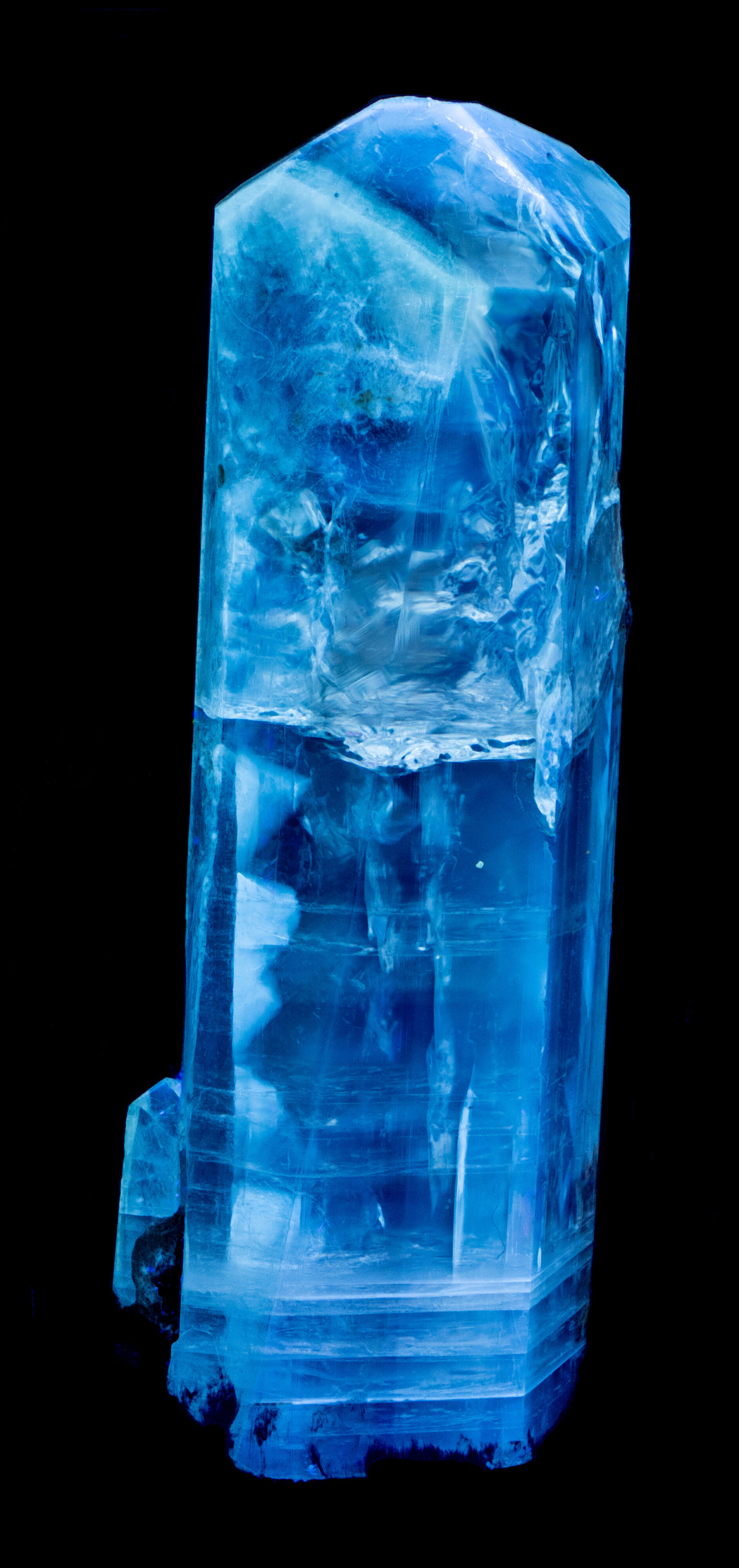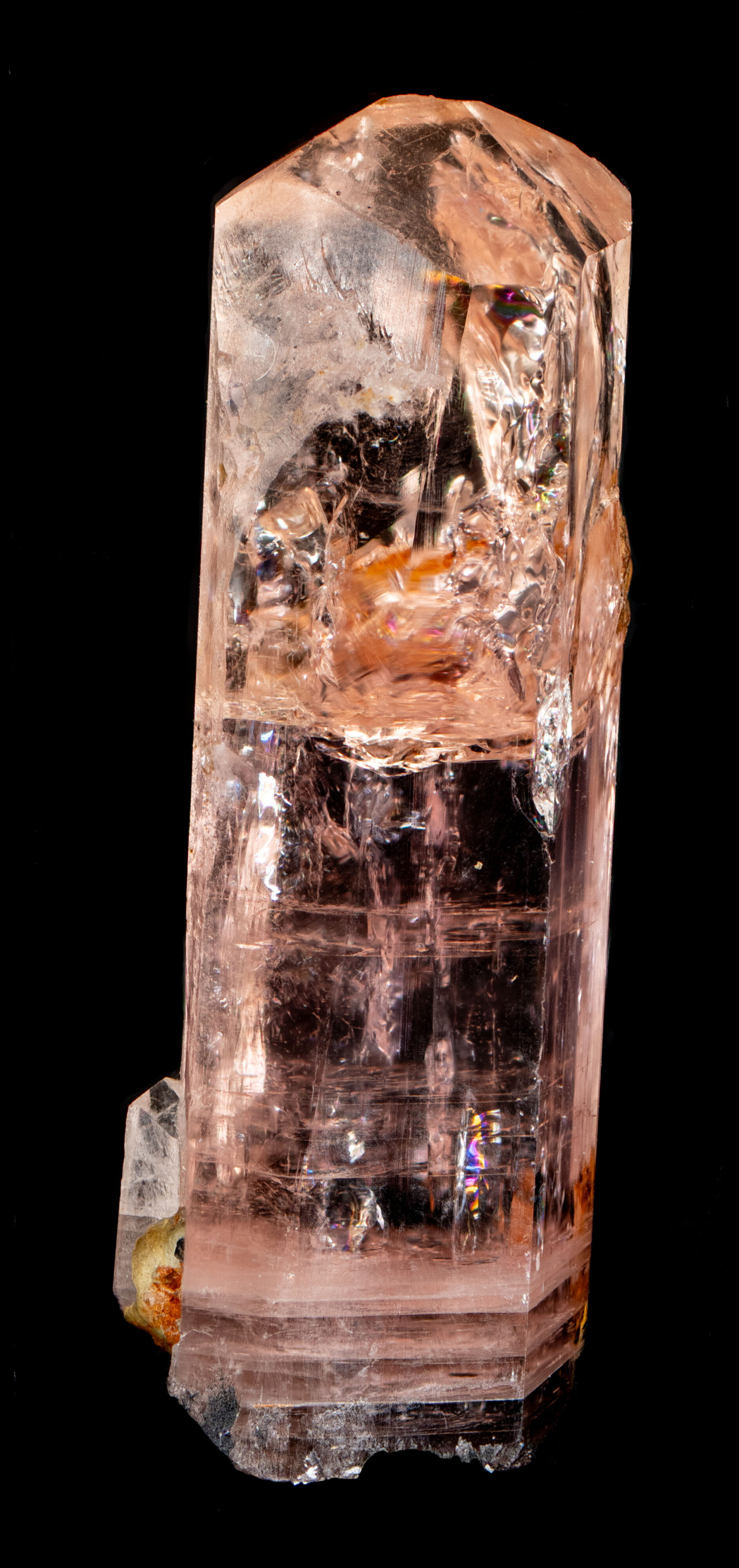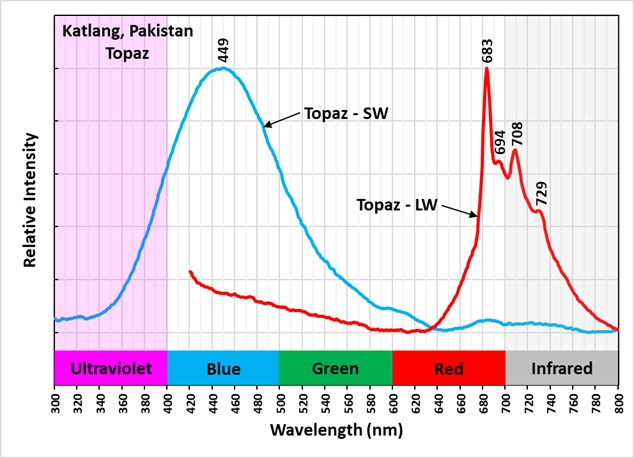Topaz from Katlang, Pakistan
Contributed by: Michael Crawford
Date: Jul 27th, 2025
Locality: Katlang, Mardan District, Khyber Pakhtunkhwa Province, Pakistan (See on Mindat)
Size: 1.5 x 5 cm
Description:
Pink topaz (Al2(SiO4)(F,OH)2) crystal from Katlang, Khyber Pakhtunkhwa Province, Pakistan. The pink color is due to trace amounts of chromium (Cr3+) that replaces aluminum. The chromium also activates the red fluorescence under longwave UV illumination. The longwave emission spectrum has four sharp peaks (683 nm, 694 nm, 708 nm, and 729 nm) characteristic of chromium activation.
The topaz crystal fluoresces bluish white under shortwave UV light. The shortwave emission spectrum is a broad peak with a maximum around 449 nm. The exact cause of this blue, white fluorescence is not fully understood. Titanium oxide (TiO6) replacing aluminum oxide (AlO6), titanium (Ti3+) and/or crystal defects are possible causes of the fluorescence.
The midwave fluorescence is relatively dim and pink. It is transitional between the red longwave fluorescence and blue, white shortwave fluorescence. There is not enough intensity to measure an emission spectrum with the spectrometer I use to measure fluorescence.
Summary of luminescence responses:
Topaz (Mindat) (RRUFF)
- Fluorescence under Longwave (365nm LED) UV light: Red
- Fluorescence under Midwave (305nm LED) UV light: Pink
- Fluorescence under Shortwave (255nm LED) UV light: White

